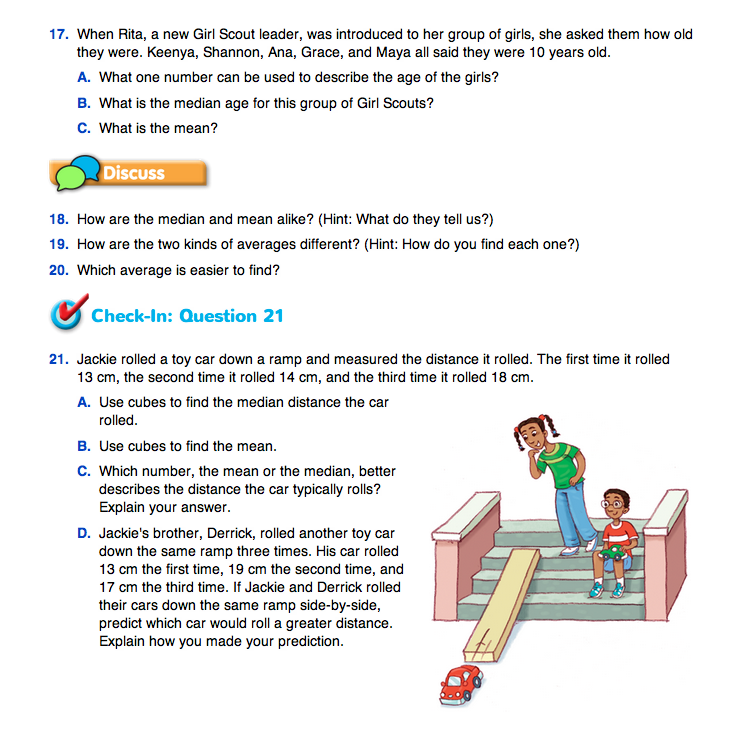Another Average Activity
Est. Class Sessions: 2Summarizing the Lesson
Questions 18–20 ask students to compare the median to the mean. The median and the mean are alike because they both tell us what is typical for a given situation by approximating the value in the center of the data (Question 18). The mean is found by “evening out” the numbers in the data set, and the median is found by finding the number in the middle of the data (Question 19). The median is often the easiest to find because it is simply a matter of lining up the data values from smallest to largest and choosing the middle value (Question 20).
For Questions 21A–21B, students use cubes to find the mean and median of three distances a car rolls: 13 cm, 14 cm, and 18 cm. Question 21C asks students which of the two averages better describes the distances. Reasonable arguments can be made for both the median and the mean. Since the shorter two distances are much closer together than the third distance, the median (14 cm) may be a better predictor of the distance the car will roll on a fourth try. However, the mean (15 cm) takes the 18 cm roll into account.
Question 21D asks students to use data about a second car to predict which of the two cars (Jackie's or Derrick's) will roll farther. Since both the median and mean distance of Derrick's car is larger than Jackie's, students should predict that Derrick's car will roll farther. Point out that averages can tell only what will probably happen. Results may not always match predictions based on averages.













